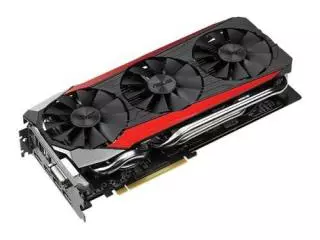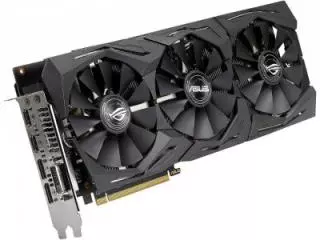Radeon R9 390X vs Radeon RX 590
In this comparison between Radeon R9 390X and Radeon RX 590 you will find out which graphics card performs better in today's games. Bear in mind that third-party versions may have more efficient cooling and higher clock speeds. This will increase cards' performance, though not by much. In addition to raw power you should also take into account the dimensions. Thicker models simply will not fit into a small mini-ITX case. The resolution of your monitor also affects the choice, since 4K gameplay requires a more powerful GPU. And don't overspend on the graphics card. Other parts of your build may also need to be upgraded, save some money for the CPU or power supply. For some people Radeon R9 390X will be the best choice, for others Radeon RX 590 will be their preference. Study the comparison tables below and make your choice.
Main Specs
Radeon R9 390X
Radeon RX 590
Power consumption (TDP)
275 Watt
175 Watt
Interface
PCIe 3.0 x16
PCIe 3.0 x16
Supplementary power connectors
1 x 6-pin, 1 x 8-pin
1x 8-pin
Memory type
GDDR5
GDDR5
Maximum RAM amount
8 GB
Display Connectors
2x DVI, 1x HDMI, 1x DisplayPort
1x HDMI, 3x DisplayPort
Check Price
Check Price
Radeon R9 390X has 57% more power consumption, than Radeon RX 590.
Both video cards are using PCIe 3.0 x16 interface connection to a motherboard.
Both cards are used in Desktops.
Radeon R9 390X is build with GCN architecture, and Radeon RX 590 - with Polaris.
Radeon R9 390X is manufactured by 28 nm process technology, and Radeon RX 590 - by 12 nm process technology.
Radeon R9 390X is 34 mm longer, than Radeon RX 590.
Memory clock speed of Radeon RX 590 is 6950 MHz higher, than Radeon R9 390X.
Game benchmarks
Assassin's Creed Odyssey
Battlefield 5
Call of Duty: Warzone
Counter-Strike: Global Offensive
Cyberpunk 2077
Dota 2
Far Cry 5
Fortnite
Forza Horizon 4
Grand Theft Auto V
Metro Exodus
Minecraft
PLAYERUNKNOWN'S BATTLEGROUNDS
Red Dead Redemption 2
The Witcher 3: Wild Hunt
World of Tanks
high / 1080p
50−55
45−50
ultra / 1080p
30−35
30−35
QHD / 1440p
24−27
24−27
4K / 2160p
14−16
14−16
low / 720p
75−80
75−80
medium / 1080p
55−60
55−60
The average gaming FPS of Radeon R9 390X in Assassin's Creed Odyssey is 2% more, than Radeon RX 590.
high / 1080p
75−80
75−80
ultra / 1080p
65−70
65−70
QHD / 1440p
50−55
50−55
4K / 2160p
27−30
27−30
low / 720p
130−140
120−130
medium / 1080p
85−90
85−90
The average gaming FPS of Radeon R9 390X in Battlefield 5 is 1% more, than Radeon RX 590.
low / 768p
45−50
50−55
QHD / 1440p
45−50
−
The average gaming FPS of Radeon RX 590 in Call of Duty: Warzone is 10% more, than Radeon R9 390X.
low / 768p
250−260
250−260
medium / 768p
230−240
240−250
ultra / 1080p
−
220−230
QHD / 1440p
150−160
150−160
4K / 2160p
100−110
100−110
high / 768p
220−230
220−230
The average gaming FPS of Radeon RX 590 in Counter-Strike: Global Offensive is 1% more, than Radeon R9 390X.
low / 768p
70−75
60−65
medium / 1080p
50−55
55−60
The average gaming FPS of Radeon R9 390X in Cyberpunk 2077 is 3% more, than Radeon RX 590.
low / 768p
120−130
120−130
medium / 768p
110−120
110−120
ultra / 1080p
110−120
110−120
Radeon R9 390X and Radeon RX 590 have the same average FPS in Dota 2.
high / 1080p
60−65
60−65
ultra / 1080p
60−65
55−60
QHD / 1440p
40−45
40−45
4K / 2160p
21−24
21−24
low / 720p
100−110
95−100
medium / 1080p
65−70
65−70
The average gaming FPS of Radeon R9 390X in Far Cry 5 is 3% more, than Radeon RX 590.
high / 1080p
90−95
85−90
ultra / 1080p
70−75
65−70
QHD / 1440p
45−50
40−45
4K / 2160p
21−24
27−30
low / 720p
210−220
210−220
medium / 1080p
140−150
140−150
The average gaming FPS of Radeon R9 390X in Fortnite is 2% more, than Radeon RX 590.
high / 1080p
80−85
80−85
ultra / 1080p
65−70
60−65
QHD / 1440p
45−50
45−50
4K / 2160p
30−35
30−35
low / 720p
130−140
130−140
medium / 1080p
90−95
85−90
The average gaming FPS of Radeon R9 390X in Forza Horizon 4 is 2% more, than Radeon RX 590.
low / 768p
160−170
150−160
medium / 768p
150−160
140−150
high / 1080p
95−100
90−95
ultra / 1080p
45−50
45−50
QHD / 1440p
35−40
35−40
The average gaming FPS of Radeon R9 390X in Grand Theft Auto V is 5% more, than Radeon RX 590.
high / 1080p
35−40
35−40
ultra / 1080p
30−35
30−33
QHD / 1440p
24−27
21−24
4K / 2160p
14−16
12−14
low / 720p
90−95
90−95
medium / 1080p
50−55
45−50
The average gaming FPS of Radeon R9 390X in Metro Exodus is 5% more, than Radeon RX 590.
low / 768p
120−130
130−140
The average gaming FPS of Radeon RX 590 in Minecraft is 8% more, than Radeon R9 390X.
high / 1080p
75−80
−
ultra / 1080p
50−55
14−16
4K / 2160p
18−20
−
low / 720p
120−130
120−130
medium / 1080p
85−90
18−20
The average gaming FPS of Radeon R9 390X in PLAYERUNKNOWN'S BATTLEGROUNDS is 66% more, than Radeon RX 590.
high / 1080p
35−40
35−40
ultra / 1080p
21−24
21−24
QHD / 1440p
16−18
16−18
4K / 2160p
10−11
10−12
low / 720p
90−95
90−95
medium / 1080p
50−55
50−55
Radeon R9 390X and Radeon RX 590 have the same average FPS in Red Dead Redemption 2.
low / 768p
180−190
170−180
medium / 768p
120−130
110−120
high / 1080p
70−75
65−70
ultra / 1080p
35−40
35−40
4K / 2160p
24−27
24−27
The average gaming FPS of Radeon R9 390X in The Witcher 3: Wild Hunt is 5% more, than Radeon RX 590.
low / 768p
120−130
90−95
medium / 768p
−
60−65
ultra / 1080p
65−70
−
high / 768p
120−130
−
The average gaming FPS of Radeon R9 390X in World of Tanks is 35% more, than Radeon RX 590.
Full Specs
Radeon R9 390X
Radeon RX 590
Architecture
GCN
Polaris
Code name
Grenada XT
Polaris 30
Type
Desktop
Desktop
Release date
16 June 2015
15 November 2018
Pipelines
2816
2304
Core clock speed
1469 MHz
Boost Clock
1050 MHz
1545 MHz
Transistor count
6,200 million
5,700 million
Manufacturing process technology
28 nm
12 nm
Texture fill rate
184.8
222.5
Floating-point performance
5,914 gflops
Length
275 mm
241 mm
Memory bus width
512 Bit
256 Bit
Memory clock speed
1050 MHz
8000 MHz
Memory bandwidth
384 GB/s
256.0 GB/s
Shared memory
-
-
DirectX
12 (12_0)
Shader Model
6.3
6.4
OpenGL
4.6
4.6
OpenCL
2.0
2.0
Vulkan
+
1.2.131
FreeSync
+
+
Bus support
PCIe 3.0
HDMI
+
Bitcoin / BTC (SHA256)
684 Mh/s
Eyefinity
+
PowerTune
+
TrueAudio
+
Mantle
+
Design
reference
Bridgeless CrossFire
+
Number of Eyefinity displays
6
DisplayPort support
+
CrossFire
+
VCE
+
DDMA audio
+
Ethereum / ETH (DaggerHashimoto)
27.5 Mh/s
High bandwidth memory (HBM)
-
Check Price
Check Price

